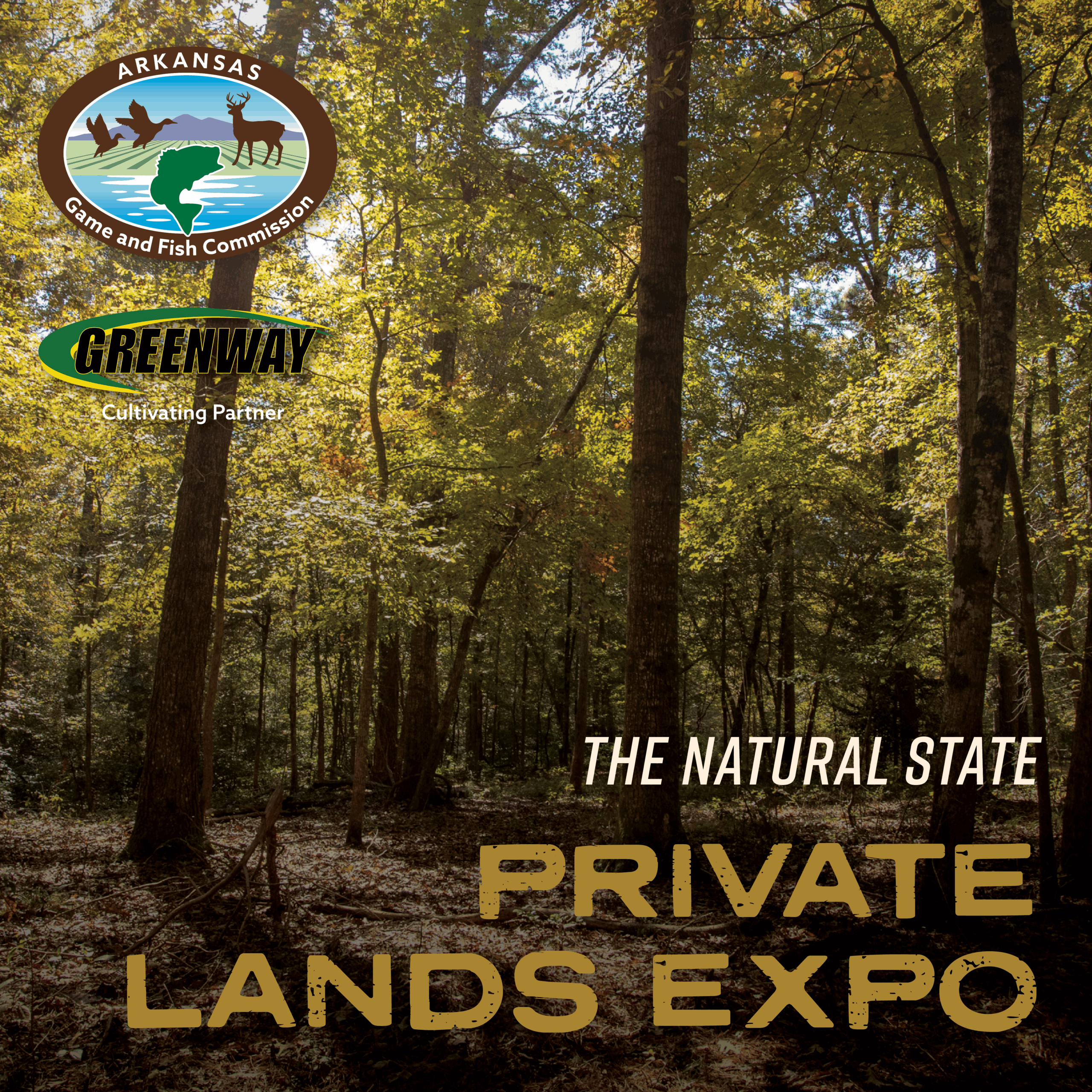Conservation Incentive Program (CIP)


Sept. 26 | 11 a.m.-5 p.m. | Benton Event Center
You’re invited to enjoy a fun-filled day with AGFC and our partners! Celebrate landowner successes, participate in several breakout sessions to explore ways to improve your land for wildlife and check out new and innovative equipment to help you manage your property. The keynote presentation and catfish fry are included in admission.
At the Arkansas Game and Fish Commission, our mission is to conserve and enhance our state’s wildlife and their habitats. It’s a job we take to heart and one we never take for granted. But our state is vast and only 10% of it is public land that we can manage. We need partners. People who are part of this natural wonder every day of their lives. Landowners who appreciate the unique resources that few have, and who take the responsibility of their land seriously.
Landowners are, and always have been, the cornerstone to conservation efforts and wildlife management in our state. If you’re willing to put in the effort and do the hard work with us, we’re willing to reward you for it.
We have numerous programs that will make your land more valuable to the fish and wildlife on your property, that reflect our shared values and will help keep The Natural State, natural.
AGFC would also like to express appreciation of our partners in the Arkansas General Assembly and Arkansas Legislative Council for their support for this program.
Click here to find a Private Lands Biologist in your area.
Applications for the Conservation Incentive Program will be available on September 1 and close September 30. Please be aware that all applications will go through a ranking period after they close, and only the highest-ranking projects will be selected for funding. We anticipate to notify all applicants of their approval status after the ranking period has concluded.
Click below to watch a video about the 2024 Conservation Incentive Program.
Purpose
Forest management practices improve the habitat conditions in hardwood and pine forests to achieve ecological benefits for ground-nesting birds such as northern bobwhite and eastern wild turkey.
Practice
Eligible lands are upland hardwood or pine forest with a current basal area greater than 80 square feet per acre that would benefit from management-promoting understory plants for nesting, brood rearing and feeding resources for ground-nesting birds. Treatment must reduce forest density by a minimum of 30% and will target primarily trees 8 inch diameter at breast height (dbh) and smaller. Forested stands with a current basal area greater than 120 square feet per acre are also eligible but will not be reduced to more than 50% basal area. Management options include timber stand improvement using herbicide (hack and squirt), cut and drop, and cut stump. Herbicide applicators must follow specific product label recommendations for the hack-and-squirt method of tree injection.
Timber Stand Improvement:$200/acre
Monitoring
AGFC staff or its agents will conduct at least one monitoring check to confirm completion of listed management practices, objectives were met and to ensure best management practices were followed.
Required Documentation
- Property boundary map
- Approved management plan with map and documentation of author
Purpose
Prescribed burns improve forest, woodland, savanna and native grassland habitats for wildlife. Outcomes will enhance habitat diversity by increasing native plant quality, quantity and vigor for wildlife use throughout their life cycles.
Practice
Qualifying firebreaks must be established using best management practices and designed as part of a prescribed burn plan written by a prescribed fire professional. Qualifying prescribed burns are restricted to predominantly native vegetation or as an approved project to restore native vegetation. Prescribed burning of agricultural stubble or pastures/hay meadows with introduced grasses does not qualify.
Dozer Lines: $1.50 per linear foot
Prescribed Burning: $50/acre
Payment will be made once all practices are completed. An approved burn plan written by professional burner will need to be provided for payment.
Monitoring
AGFC staff or its agents will conduct one monitoring check following the completion of firebreak installation to ensure best management practices were followed and lines were installed correctly. AGFC staff or its agents will conduct one monitoring postburn to ensure the approved burn plan objectives were met.
Required Documentation
- Property Boundary Map
- Approved management plan with map and documentation of author
Purpose
Incentivizing control of non native (invasive) tree species encourages landowners to help reduce the threats and impacts of invasive plant species to Arkansas’s wildlife and plant communities, and the habitats in which they occur.
Practice
A part of integrated vegetation management is the removal of invasive woody plants as outlined in an approved management plan. Invasive tree species that qualify include: Chinese Tallow, Tree of Heaven, and Callery Pear. The removal process must include the use of herbicide. This practice is intended to restore the desired plant community consistent with the ecological site. Herbicides must be used according to the product label and align with an approved habitat management plan.
Invasive Tree Removal:$200/acre
Payment will be made once practice is completed.
Monitoring
AGFC staff or its agents will conduct at least one monitoring check to confirm completion of listed management practices, objectives were met and to ensure best management practices were followed.
Click here for more information about Arkansas’s Aquatic Nuisance Species.
Click here for more information about Arkansas’s terrestrial invasive plants.
Required Documentation
- Property boundary map
- Approved management plan with map and documentation of author

